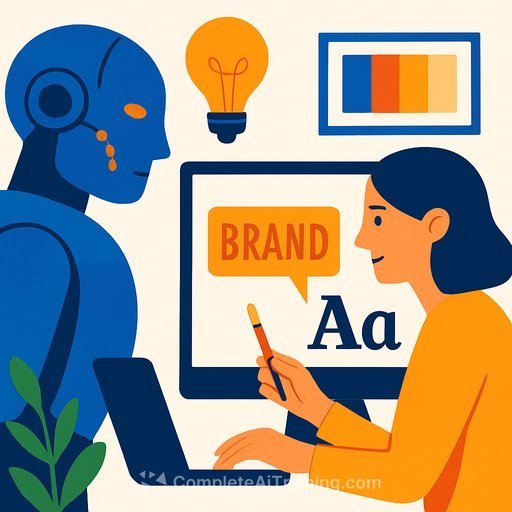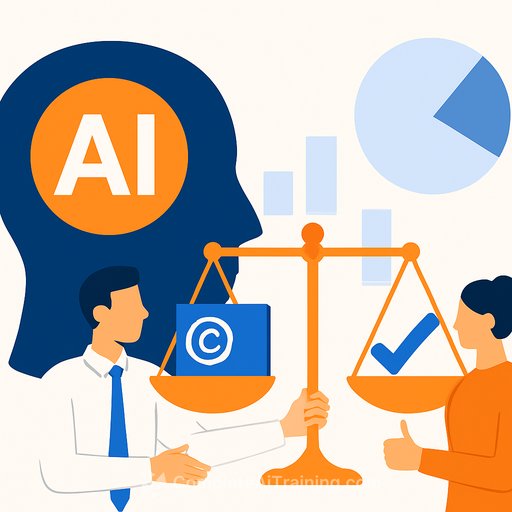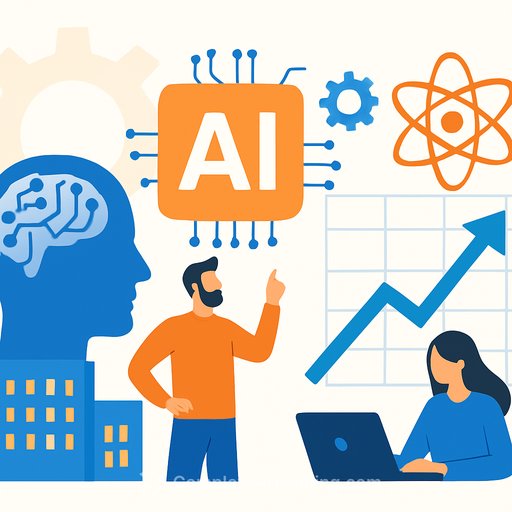Adopting AI in Design: From Tool to Creative Partner
Design drives growth. Companies that invest in strong design practices outperform peers in revenue growth, with credible research pointing to measurable impact across industries. The takeaway for creatives: strategy and collaboration beat one-off aesthetics.
Most online logo makers still churn out clip-art graphics. They miss the story. What moves an audience is emotion, and that starts with clarity and constraints, not an endless scroll of icons.
Who Is Grant Polachek?
Grant Polachek is the Chief Growth Officer at Atom, a global branding platform supporting more than 50,000 companies. He has led over 1,000 consultations with founders and brand leaders, giving him direct insight into how teams balance imagination with execution.
In a recent interview, Polachek shared how Atom built an AI logo maker that blends decades of branding experience with AI to create strategic, emotionally resonant identities.
Build Logos That Communicate Emotion
Logos that connect aren't just pretty; they express how a brand should feel. Most tools miss this, defaulting to generic icons and trendy shapes.
Atom's AI logo maker prompts founders to select brand styles like innovative, bold, luxurious, or peaceful-then pair those with their own words about identity and audience. The result is a mark aligned with the feeling you want to spark.
"At Atom, we understand that what makes brands stand out is the key emotions they evoke in their audience," Polachek said. "Our logo maker allows brands to pair a style with a vision for the brand's identity in the founder's own words to create a truly impactful logo."
Use Constraints to Unlock Creative Possibilities
Blank canvases cause decision fatigue. Constraints reduce noise and push stronger ideas.
Atom's tool guides users with clear logo-type and style menus, plus descriptive prompts. That balance gives non-designers confidence and keeps teams focused.
"One of the primary insights from our branding experts was that constraints can encourage creativity, which is why we added the drop-down Logo Type and Style menus alongside the ability for descriptive prompting," Polachek explained.
Test Relentlessly to Improve Real-World Quality
Real feedback beats internal theory. Atom tested hundreds of domain landing pages and looped community feedback into each iteration.
That process refined the prompts behind the AI, improving quality and alignment with brand needs. "It gave us 100s of iterations on our backend prompts," Polachek said. "This deep exercise in prompt engineering has had a huge impact on the quality of our logos."
Treat AI as a Partner, Not a Replacement
AI is great for options and speed. Humans shape taste, narrative, and context.
"Our vision isn't for AI to replace human creativity, but to become a valuable tool that enhances our creativity," Polachek said. The workflow: generate formats and directions fast, then refine with a designer when polish and originality matter most.
Apply Enterprise Lessons to Improve Startup Tools
Work with brands like Dell, Nestlé, and Hilton highlighted a simple truth: big outcomes require process, not chaos. Many teams understand strategy, but lack consistent systems for naming, logo development, and decisions.
Atom baked those lessons into its AI. The experience starts with vision and ends with emotion-guided prompts keep each step aligned with product, audience, and brand. "The main thing that big companies and branding experts understand is brand alignment," Polachek says.
Make Design Accessible Without Losing Strategic Depth
Strong design delivers business results, but budgets and bandwidth often hold teams back. With the right structure, AI can democratize quality without losing the nuance that makes brands stick.
Startups move fast with confidence. Enterprise teams scale ideation while staying on brief.
What to Look For in an AI Logo Tool
- Emotion modeling: Can you define feelings and brand style upfront?
- Guided constraints: Clear logo-type and style menus with prompts.
- Context testing: Outputs that work across web, social, product, and print.
- Feedback loop: Active iteration based on real use and community input.
- Brand alignment: Prompts that link product, audience, and message.
- Handoff-ready: Assets and directions a designer can refine quickly.
A Practical Workflow for Creatives
- Clarify the emotion: Choose 1-2 core feelings you want to spark.
- Define the style: Innovative, bold, luxurious, peaceful-pick a stance.
- Write a one-paragraph brand statement in plain language.
- Select logo type (wordmark, lettermark, symbol, combo) based on use cases.
- Generate 10-20 options, then shortlist 3 for real-world testing.
- Mock on site headers, app icons, packaging, and social avatars.
- Collect feedback from customers, not just internal teams.
- Refine with a designer to lock typography, spacing, color, and motion.
- Ship a simple brand kit with usage, sizes, and do's/don'ts.
If you want deeper research on the ROI of design, see McKinsey's analysis of design's business value here. For sharpening your prompt craft to get better AI outputs, browse practical resources on prompt engineering here.
Atom's AI Logo Maker FAQs
Why did Atom build its own AI logo maker?
Most tools produce generic clip-art logos; Atom combined AI with branding expertise to create meaningful identities.
How does the tool capture brand emotion?
Founders select style options and describe their vision in their own words. The AI turns that into visuals that reflect how the brand should feel.
How was the tool tested before launch?
Atom iterated on hundreds of real domain pages and incorporated active community feedback to improve logo quality.
What makes Atom's approach different?
It blends structure with flexibility. Guided prompts keep users focused while helping them explore ideas that fit the brand.
Does this replace human designers?
No. The tool jumpstarts ideas so designers and brand teams can focus on storytelling, detail, and craft.
Is the tool useful for large brands as well as startups?
Yes. Startups can launch quickly; enterprise teams can scale ideation with clear brand strategy.
The Bottom Line
Logos that resonate are built on emotion, structure, and iteration. Treat AI like a creative partner, keep the process disciplined, and you'll ship identities that build trust and growth.
Your membership also unlocks:






